Abstract
We have examined the events underlying the initiation of spontaneous action potentials (fibrillation) in fibres of previously denervated rat diaphragm maintained in organ culture for up to 10 days.
1. Based on discharge pattern, two classes of spontaneously active fibres were found: rhythmically discharging fibres, and fibres in which action potentials occur at irregular intervals.
2. Sites of action potentials initiation were located by exploration along the fibre length with two independent extracellular recording electrodes. The majority of sites of origin in both regular and irregular fibres were at the former end-plate zone; however, there was no region along the length that could not, at least in some fibres, be a site of origin.
3. Intracellular recording at or near sites of origin of action potential discharge showed two types of initiating events. Irregularly discharging fibres were brought to threshold by discrete depolarizations of up to 15 mV in amplitude, while regularly occurring action potentials were associated with oscillations of the membrane potential.
4. Discrete depolarizations (called fibrillatory origin potentials or f.o.p.s) at sites of origin in irregularly discharging fibres have the following properties: (a) random occurrence and nearly constant amplitude outside a refractory period during which both amplitude and probability of a second f.o.p. are reduced; (b) associated inward current flow which is localized to about 100 μm or less along the fibre length, and (c) dependence of amplitude and frequency on membrane potential.
5. Oscillation of membrane potential found at sites of origin of action potential discharge in regular fibres also occurred locally along the fibre length and was sensitive to changes in membrane potential.
6. Both f.o.p.s and oscillations of membrane potential were reversibly abolished by low Na+—Ringer fluid or tetrodotoxin.
7. Neither type of initiating event was appreciably affected by concentrations of D-tubocurarine which blocked extrajunctional sensitivity to acetylcholine.
8. We conclude that spontaneous action potentials under these conditions arise from a localized Na+-conductance change in the membrane of the active fibre; this conductance change is distinct from the increased Na+-conductance which follows the interaction of acetylcholine with its receptor. Spontaneous activity in single, denervated muscle fibres is cyclical and self-inhibiting (Purves & Sakmann, 1974); thus the Na+-conductance change underlying the initiation of spontaneous action potentials is affected by muscle fibre activity.
Full text
PDF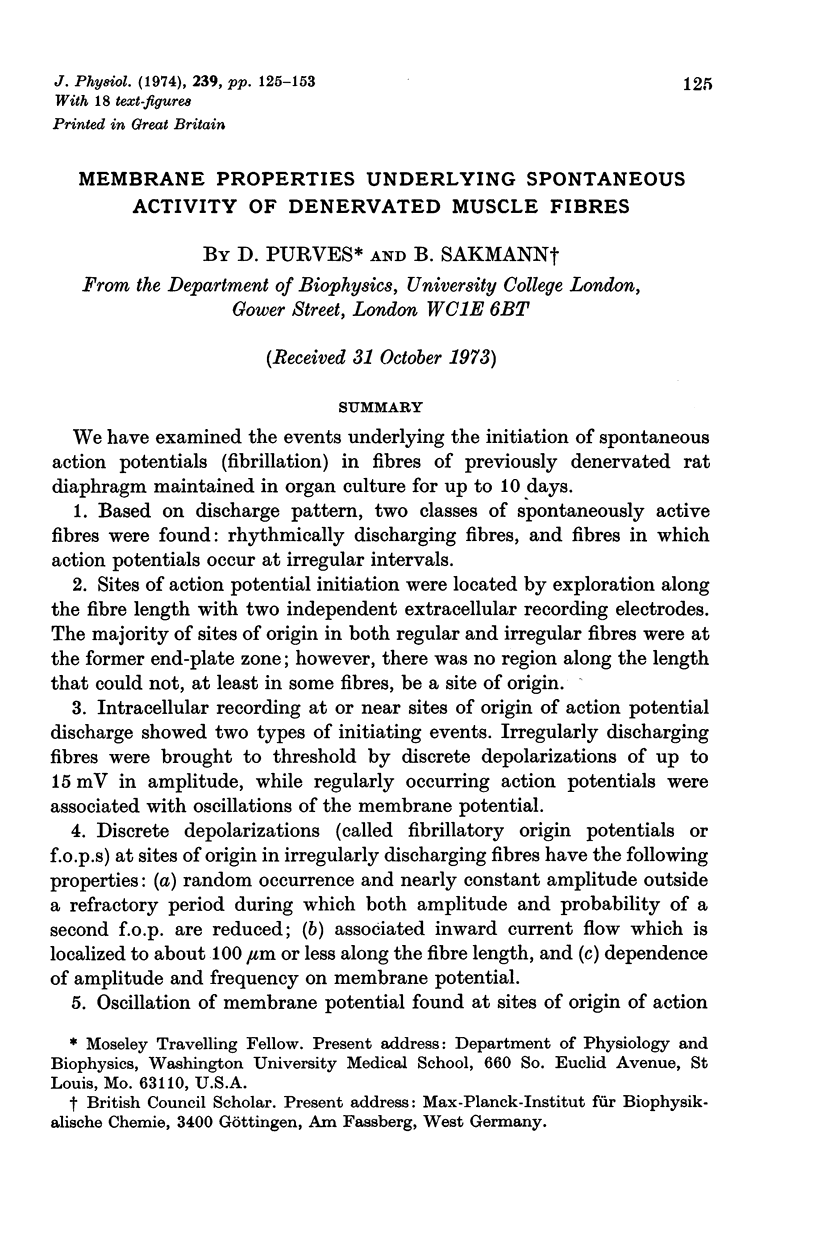
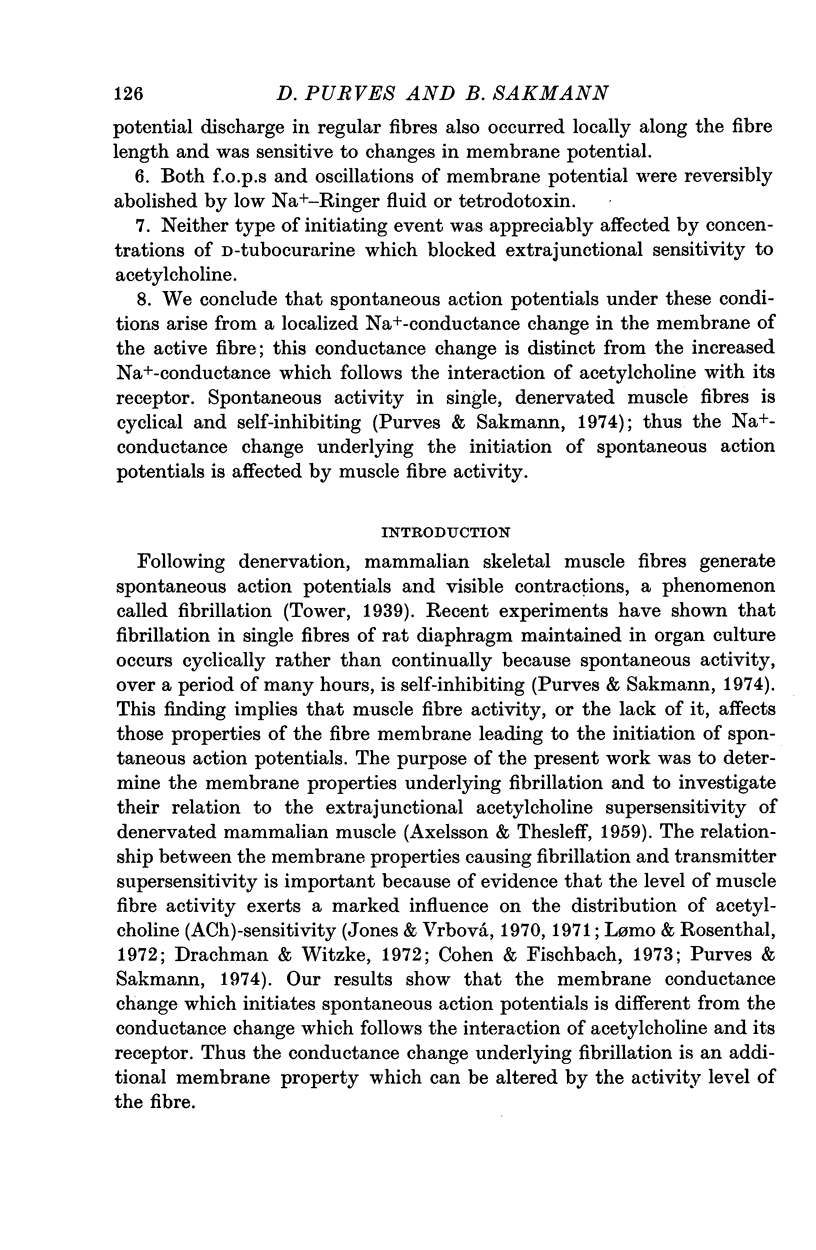
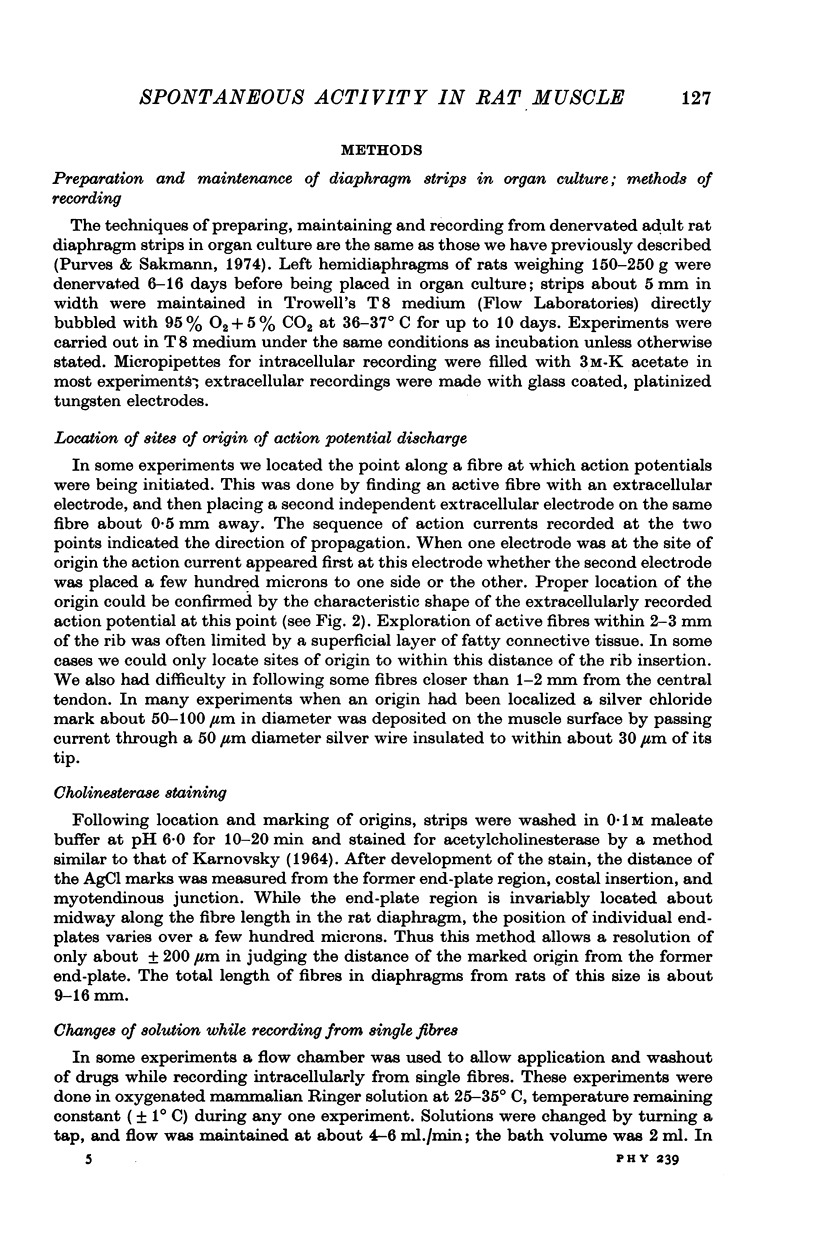
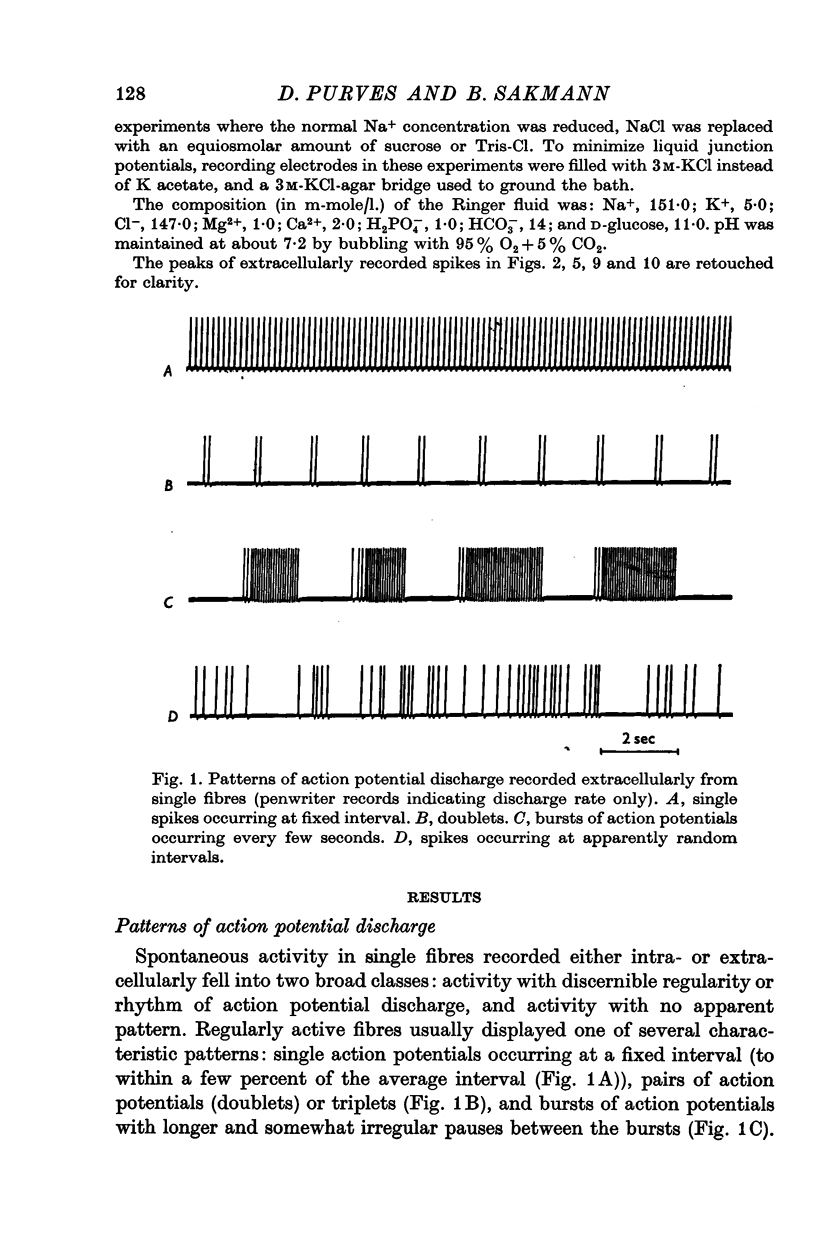
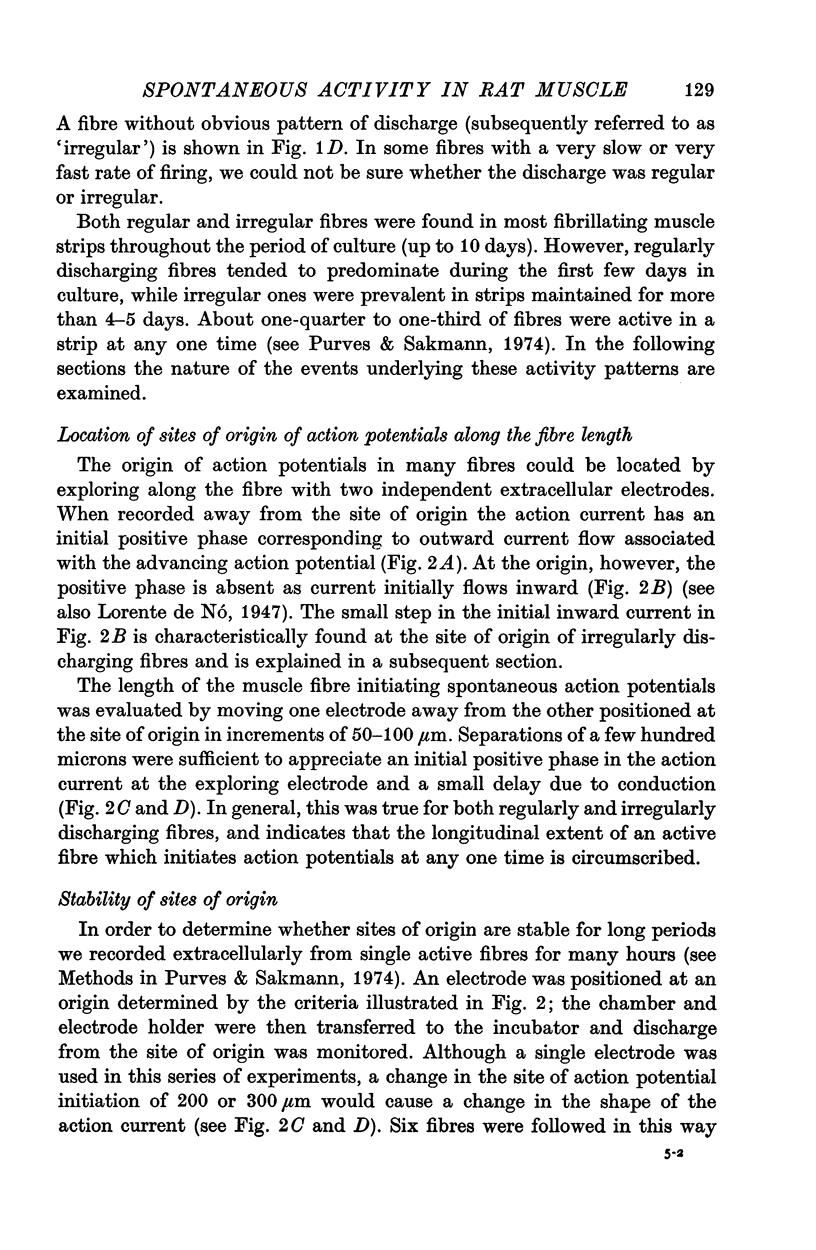
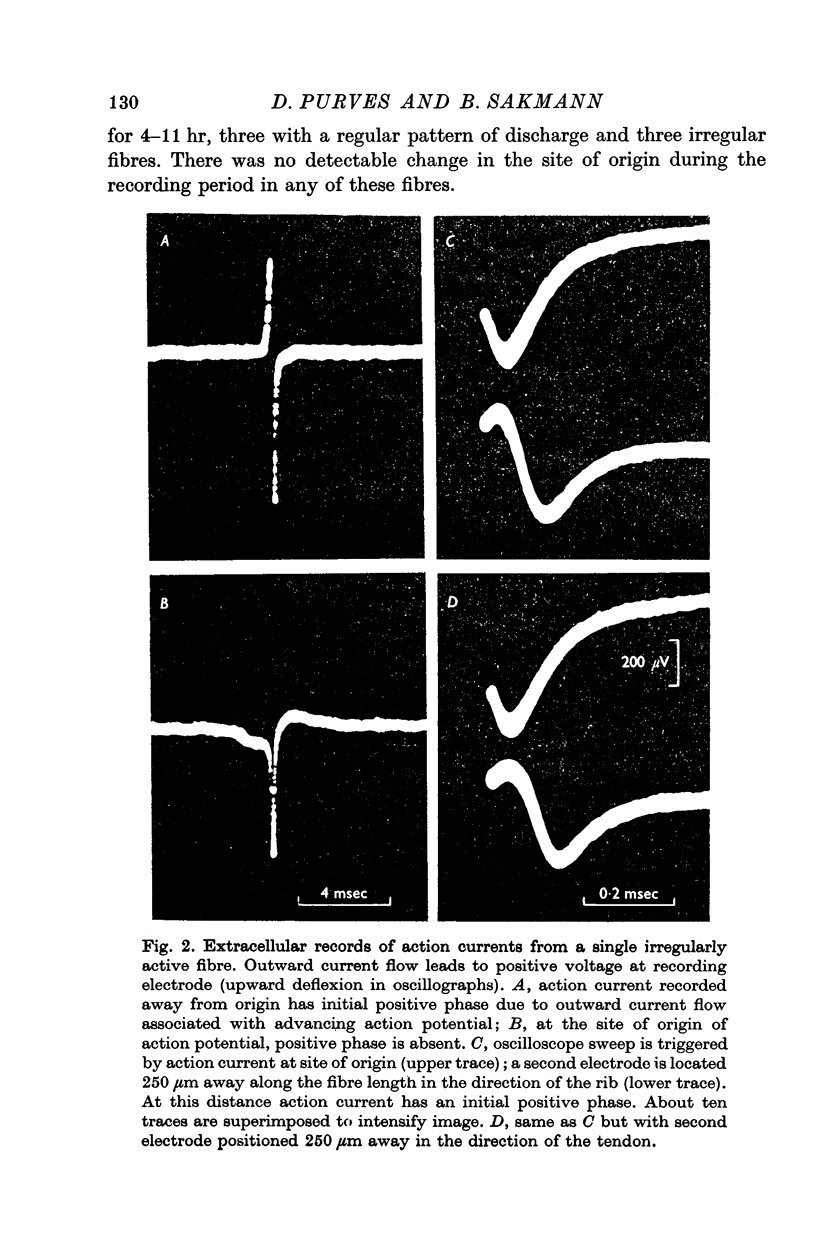
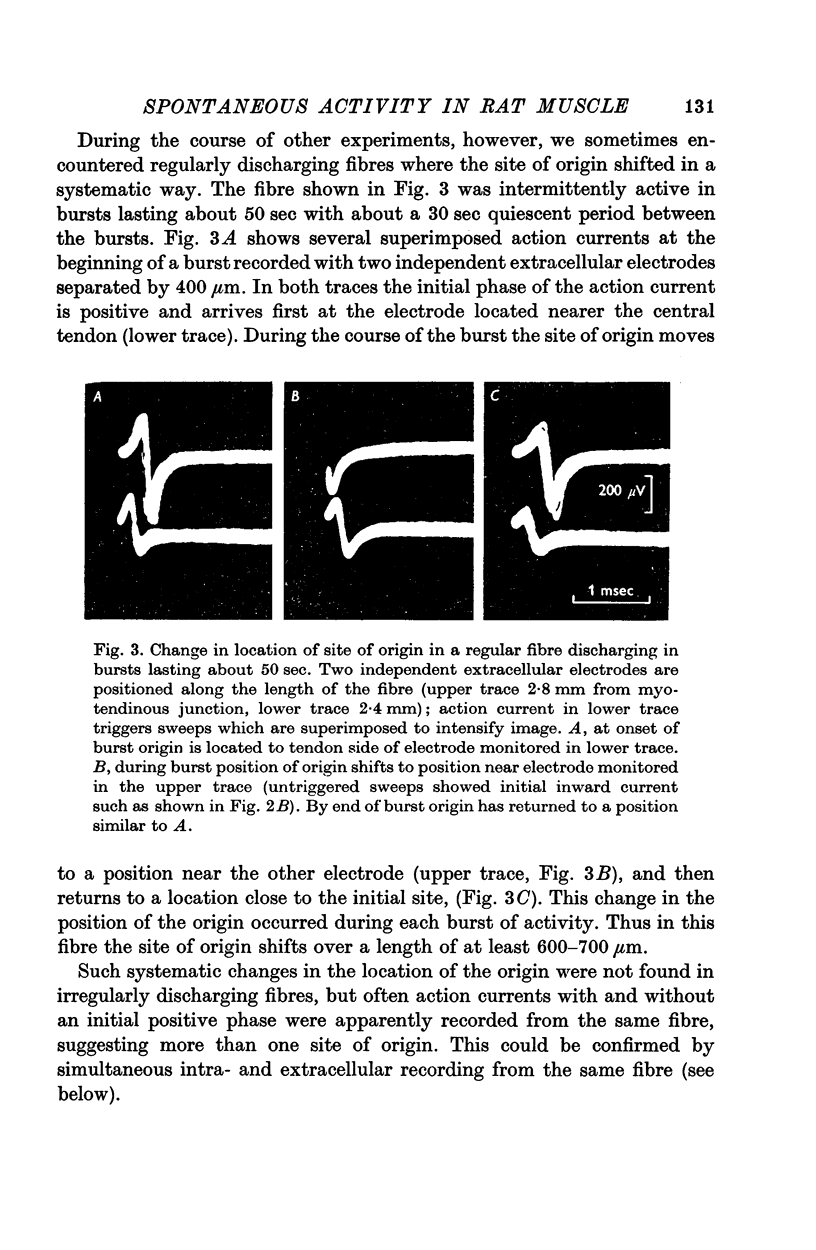
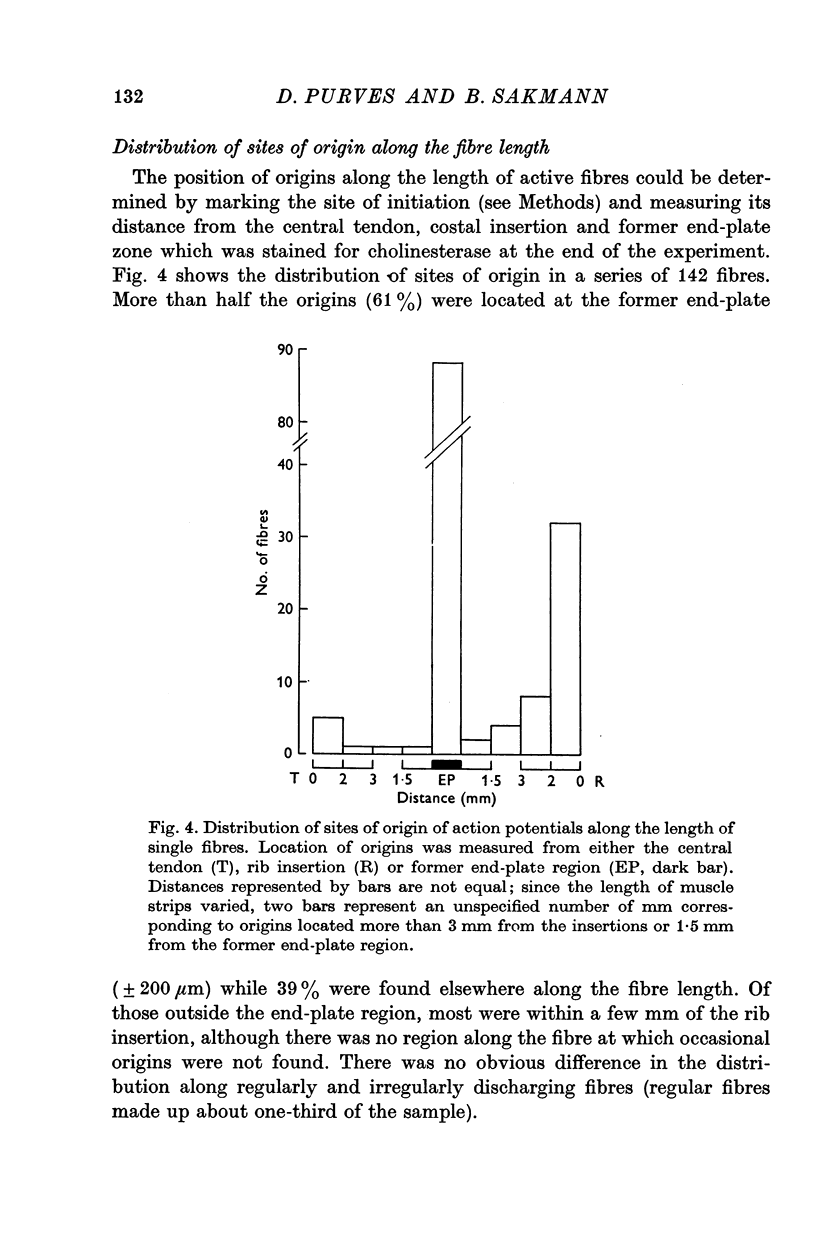
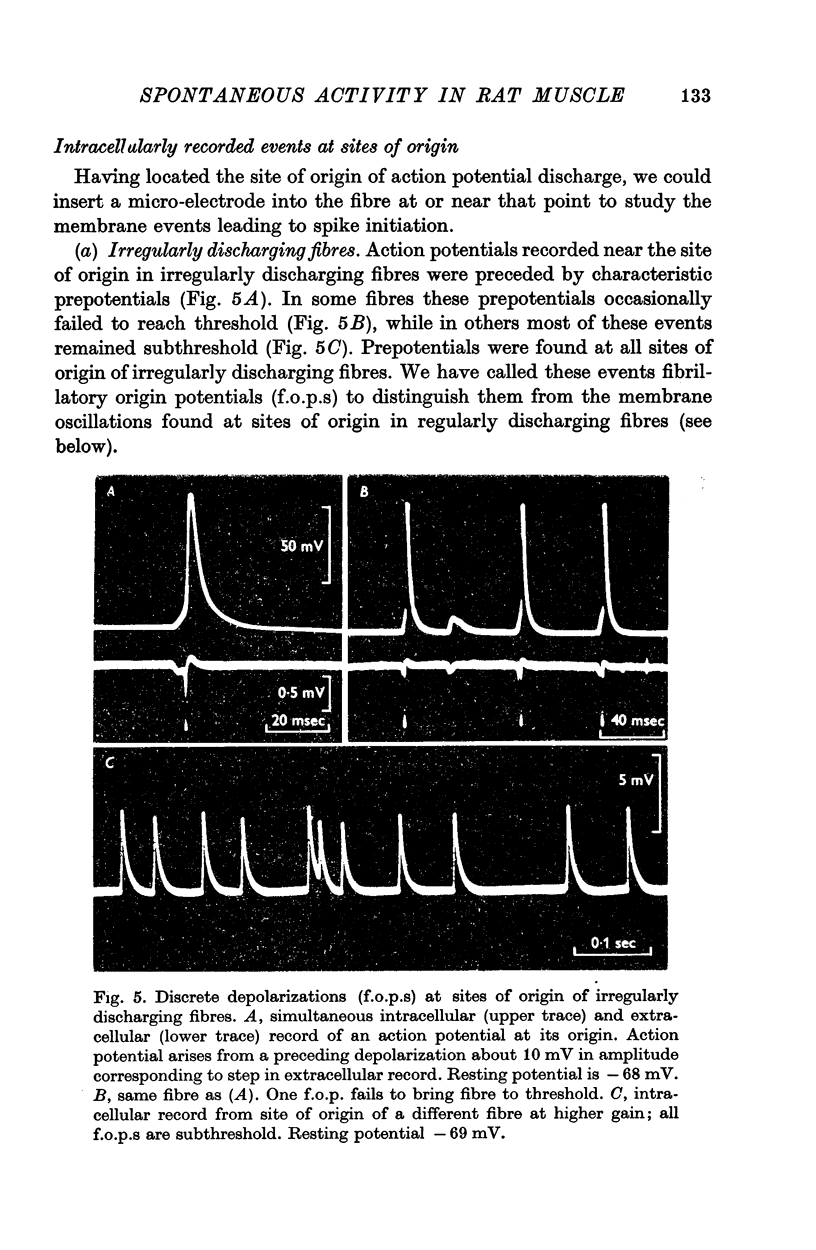
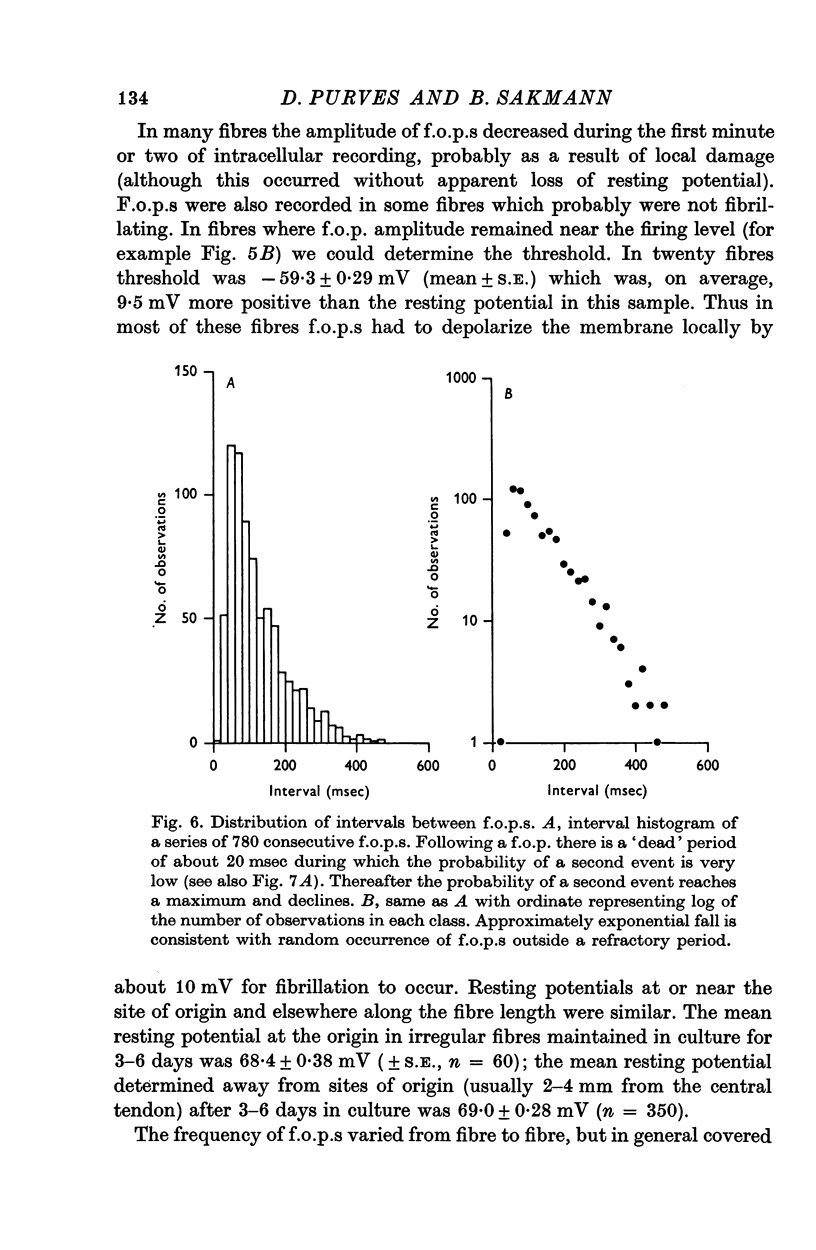
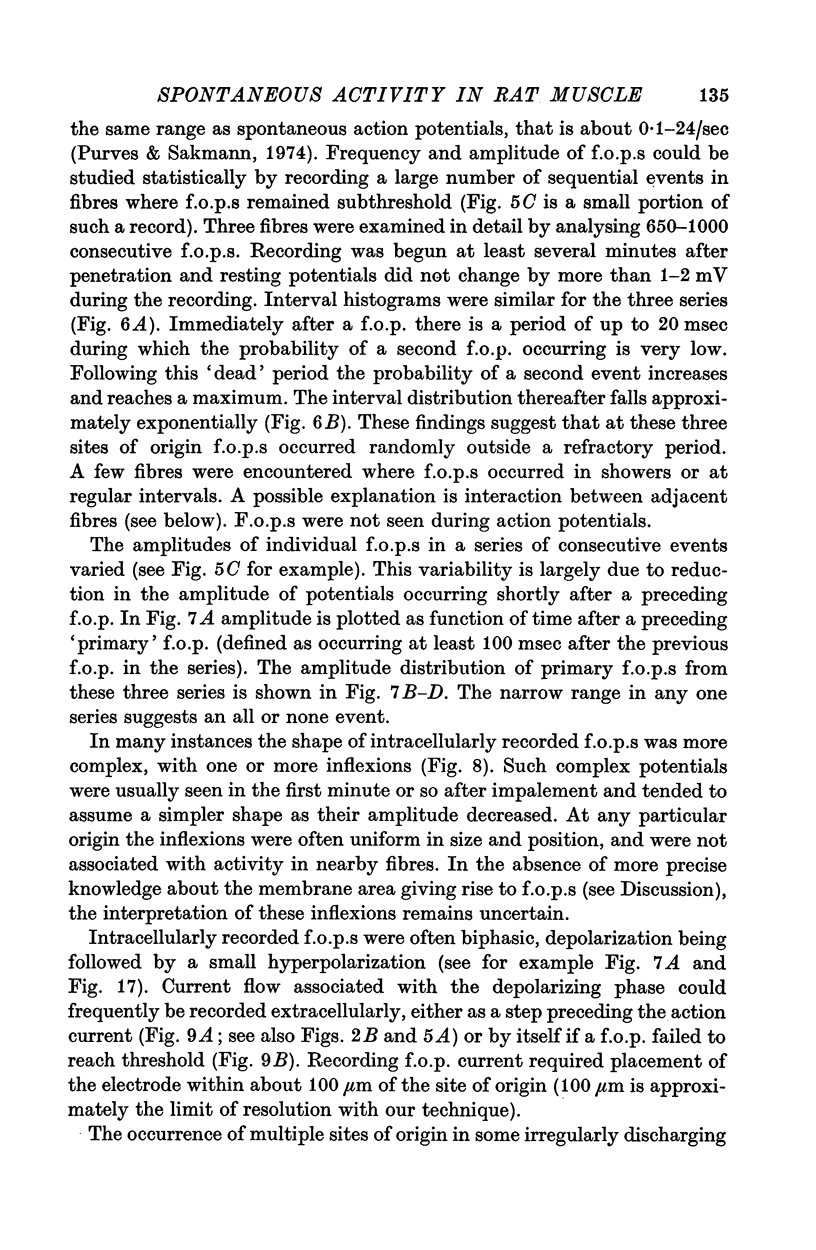
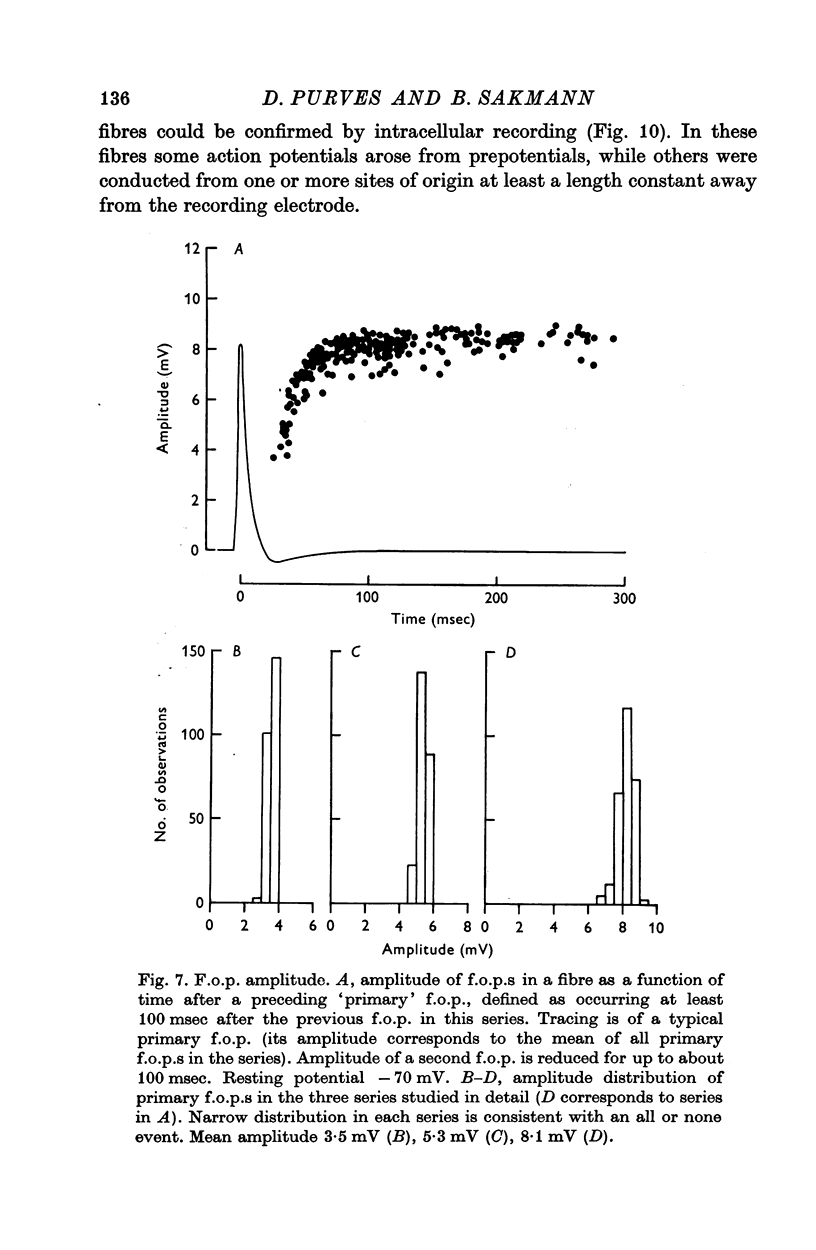
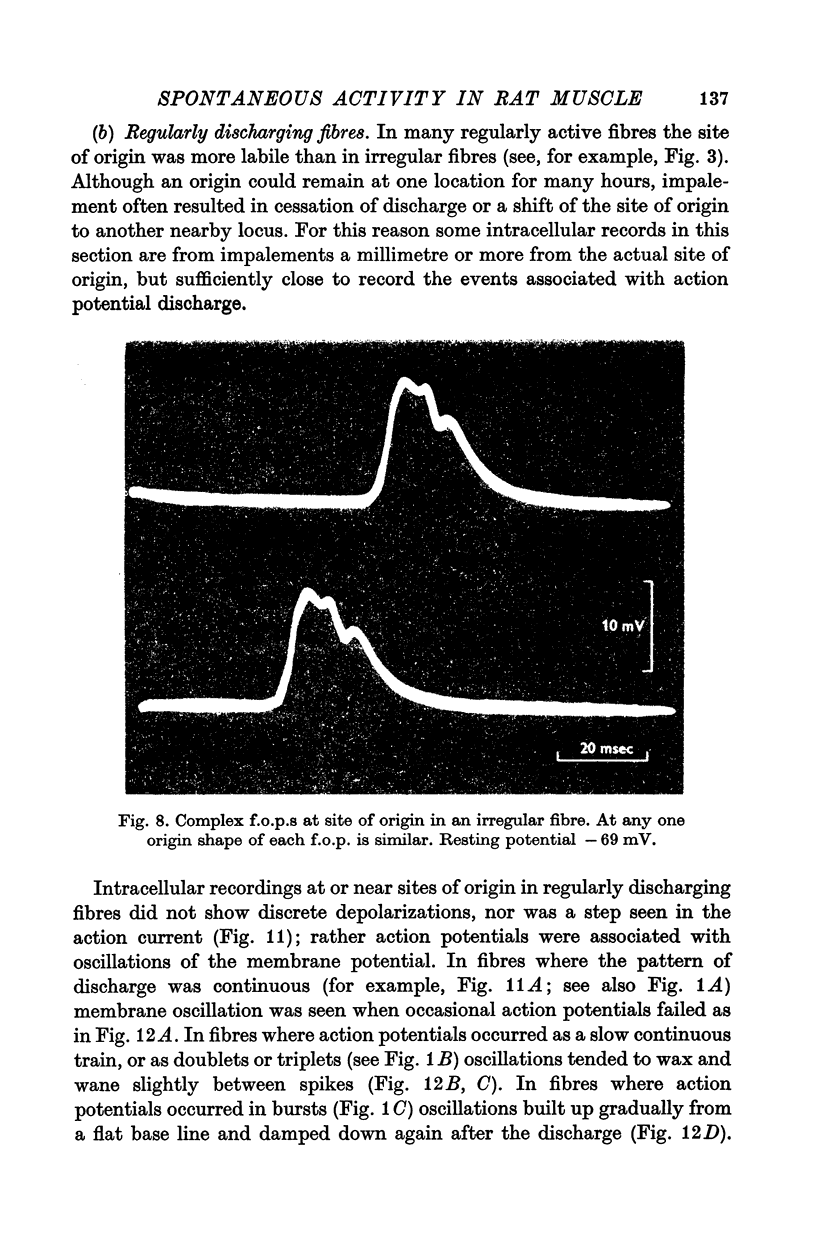
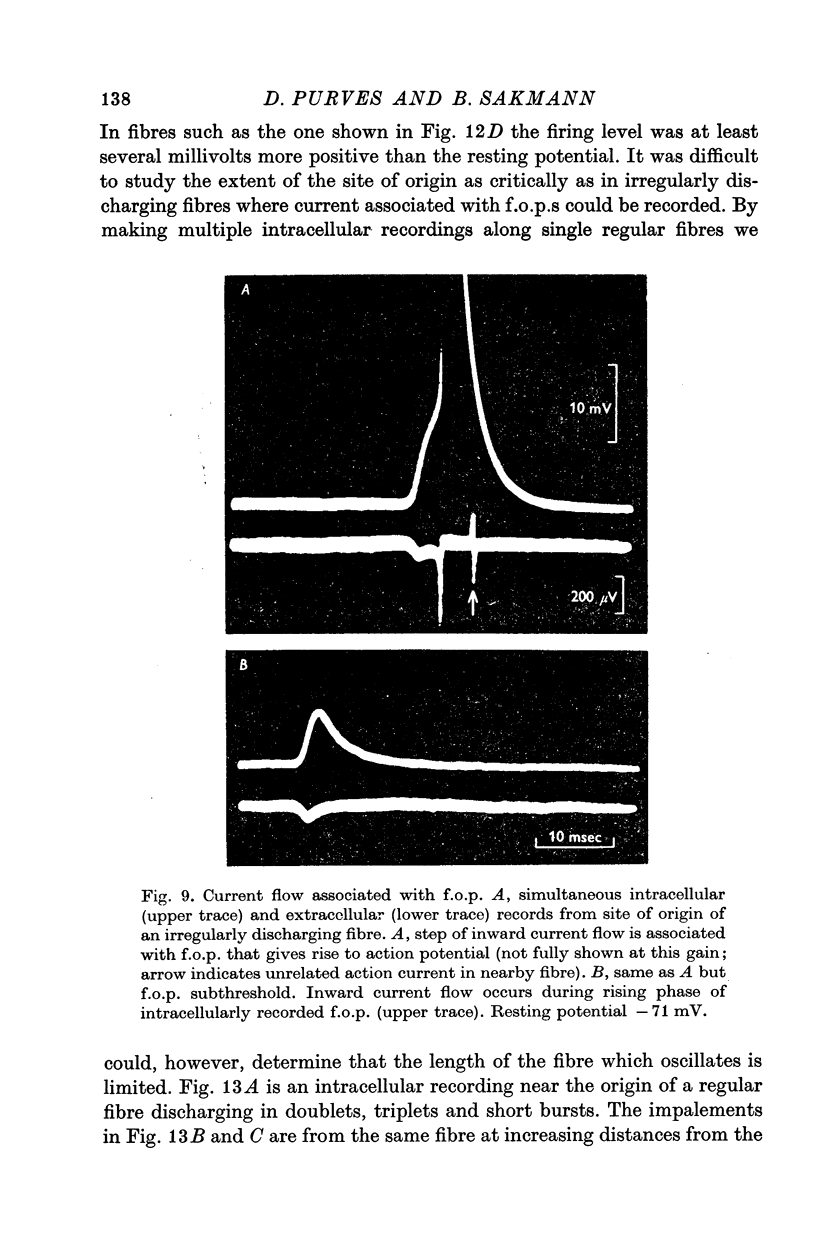
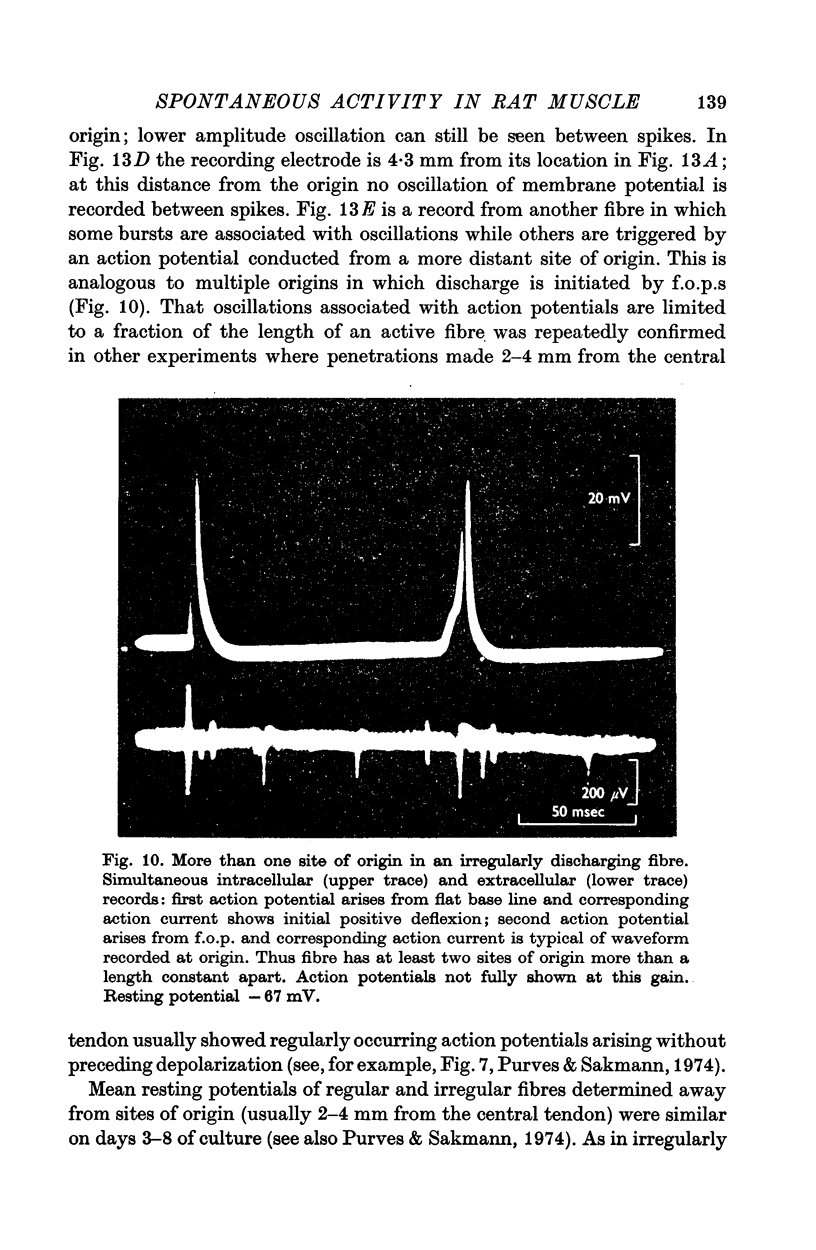
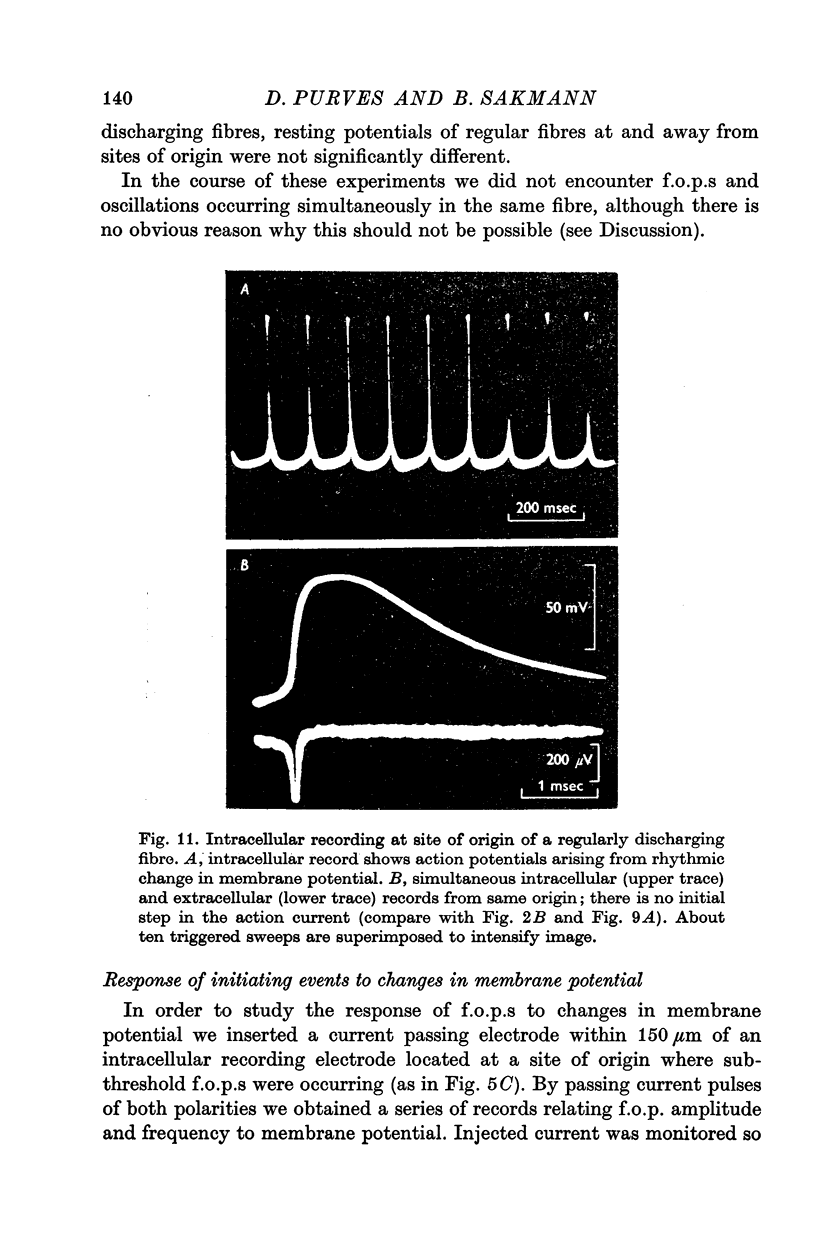
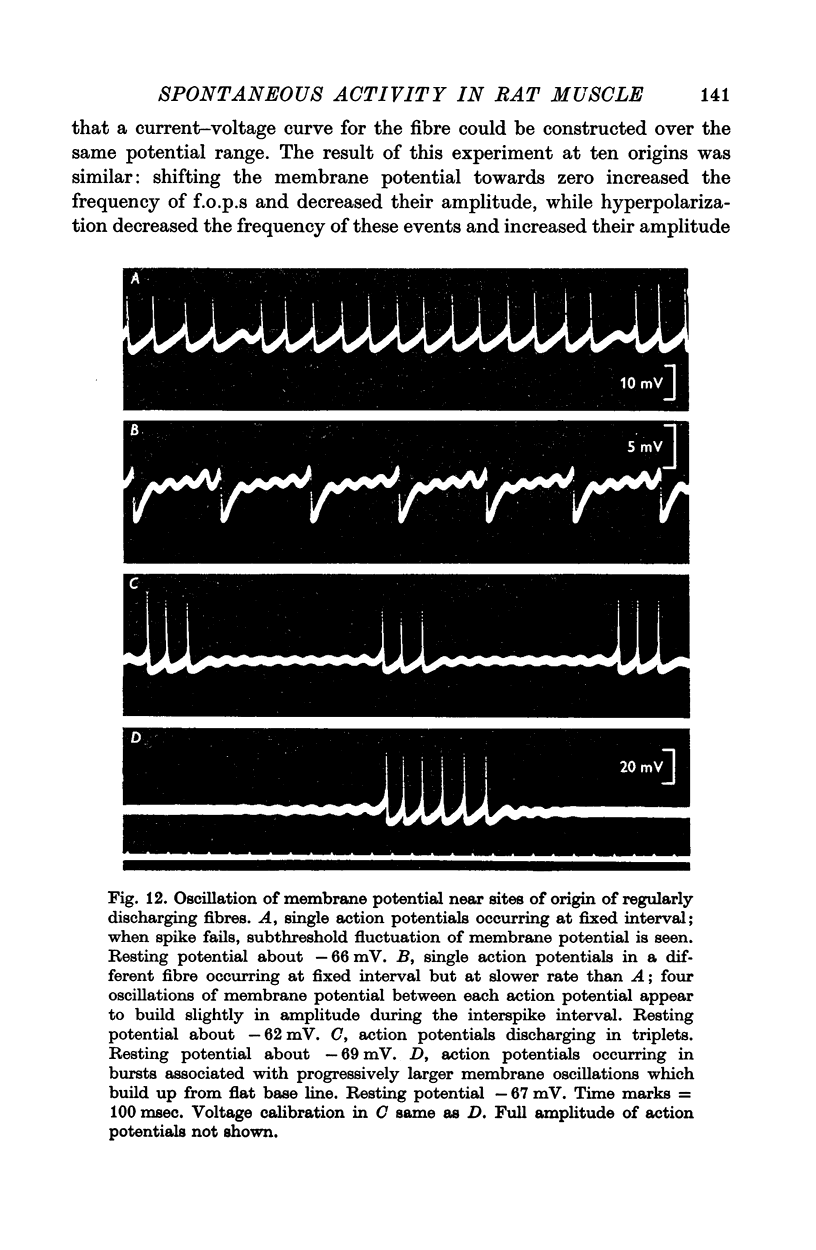
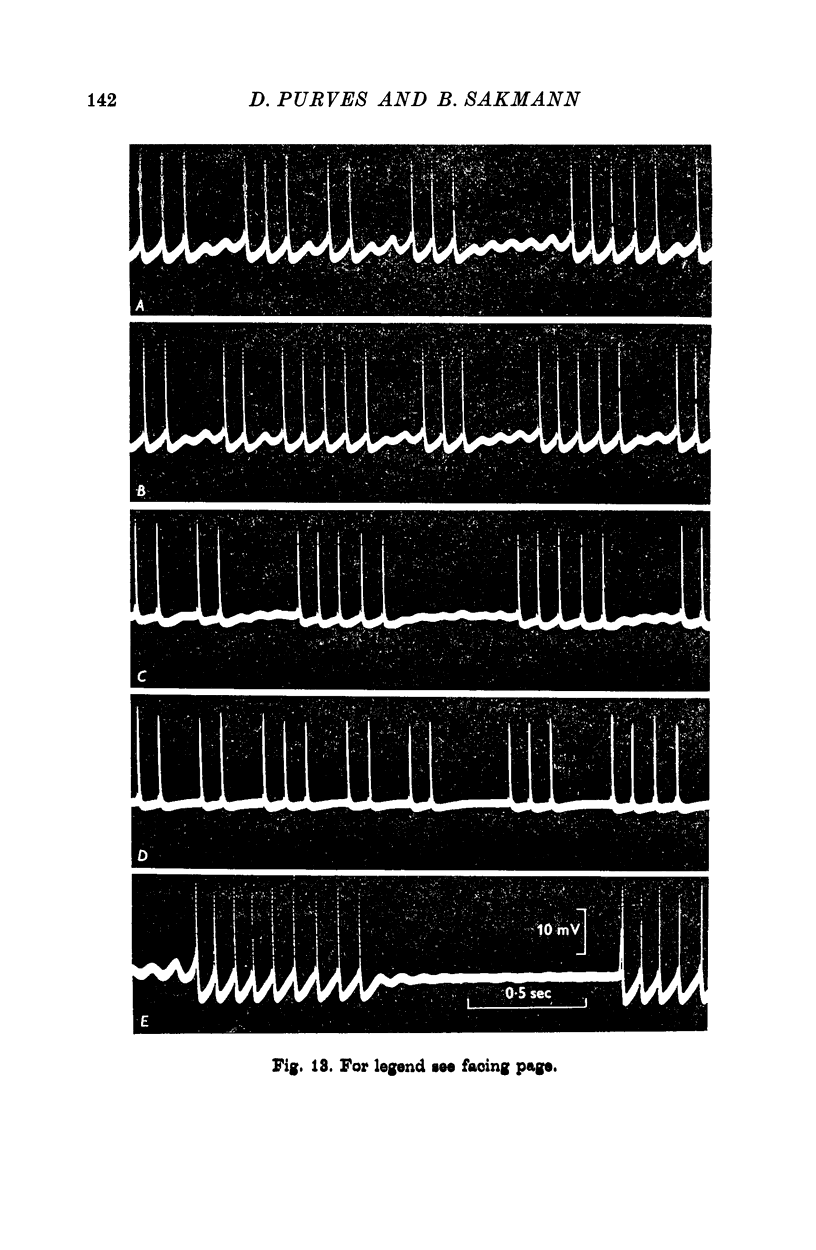
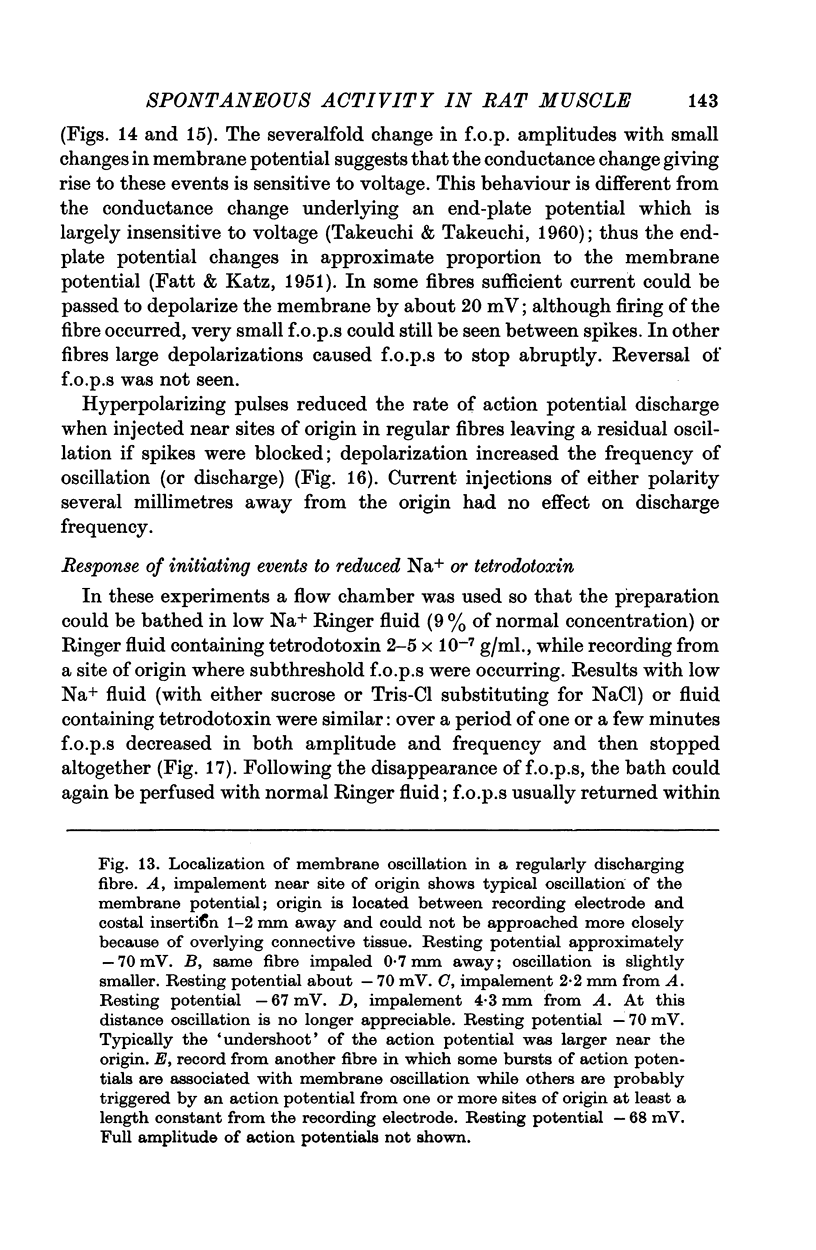
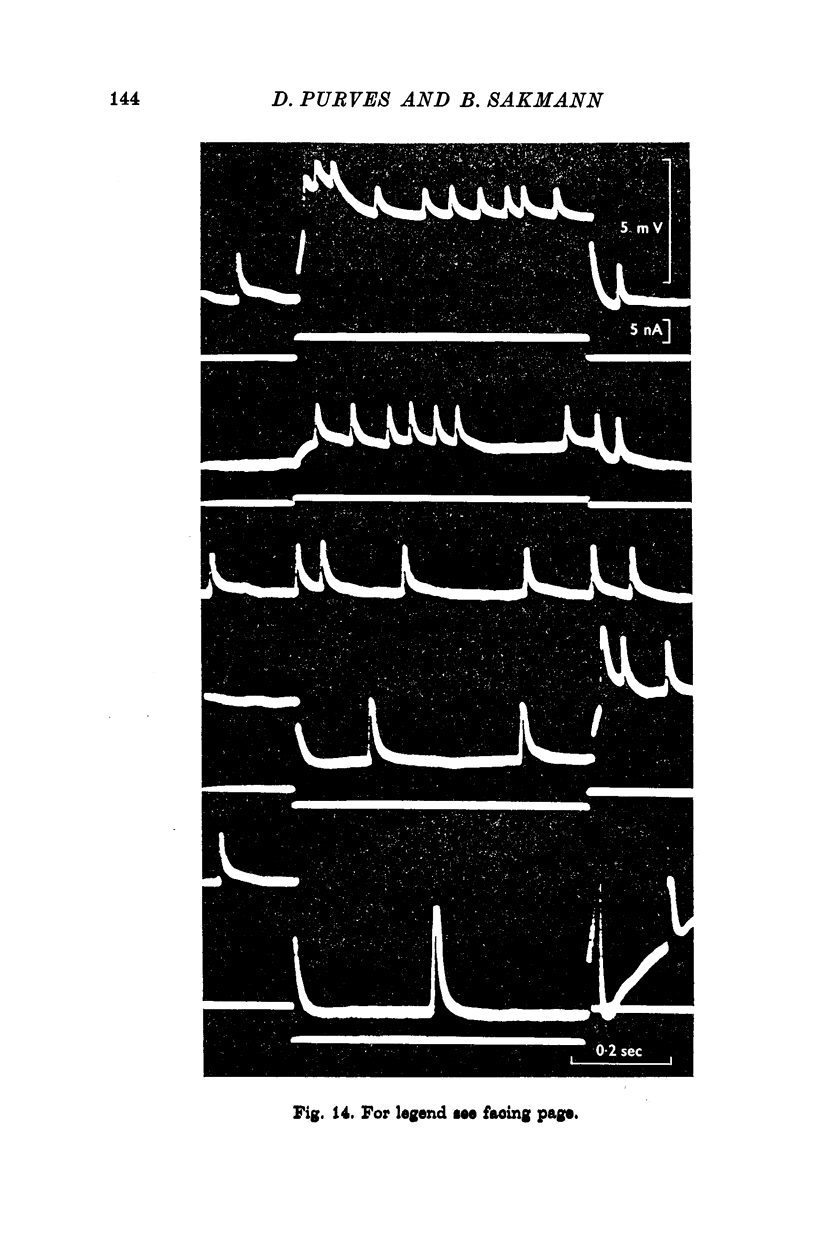
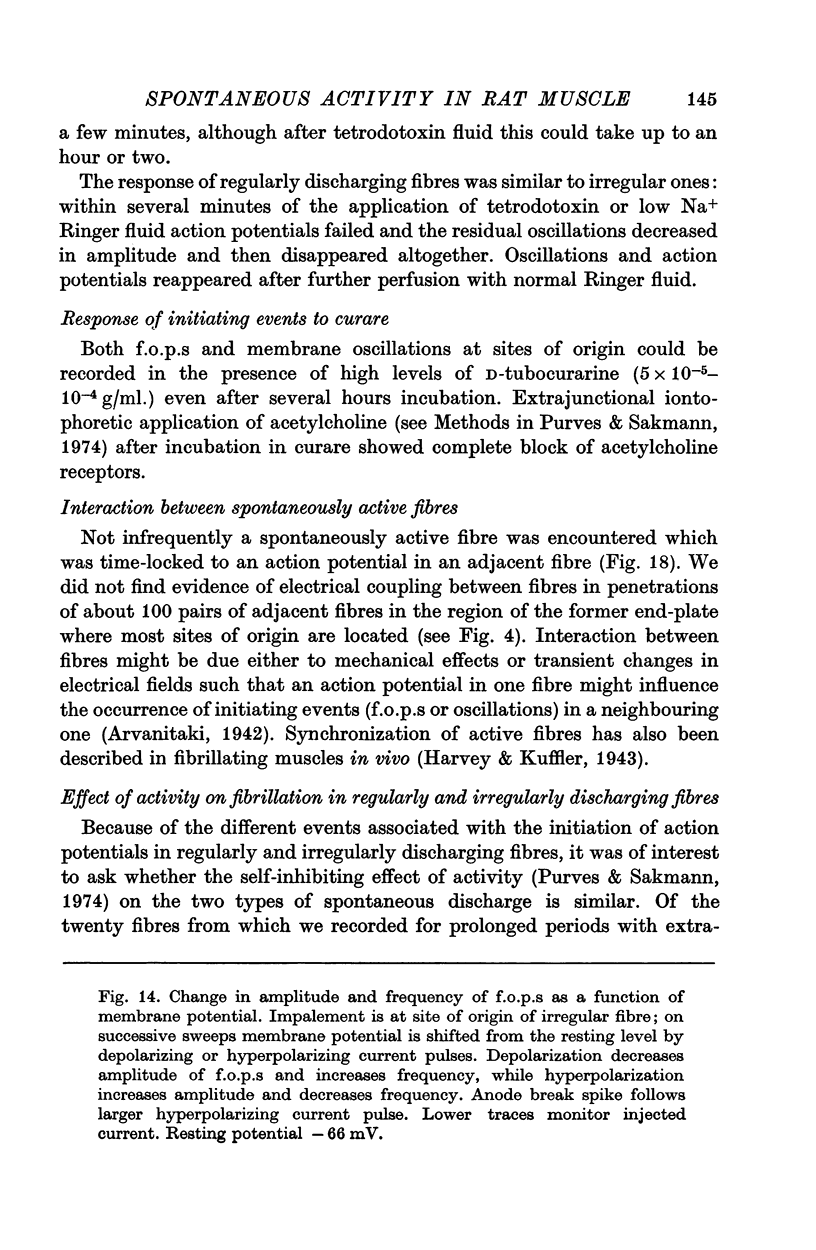
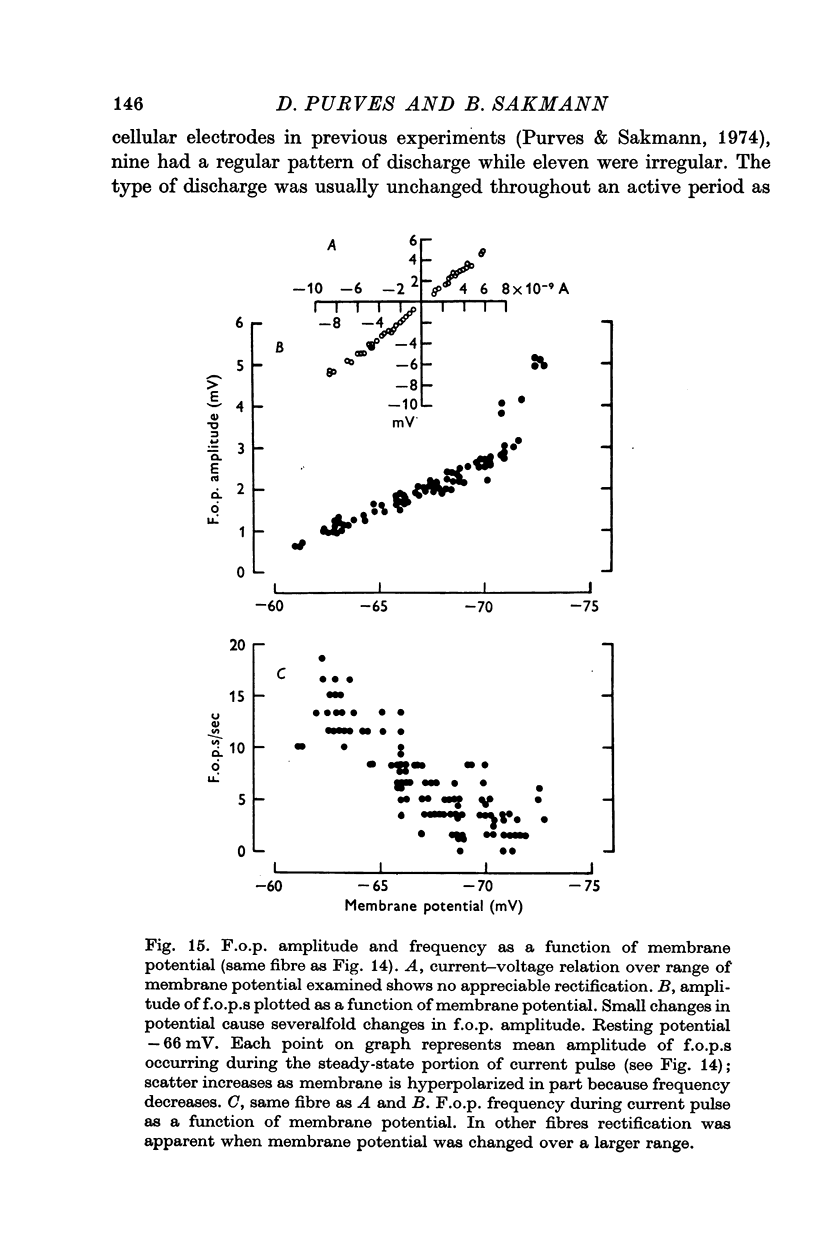
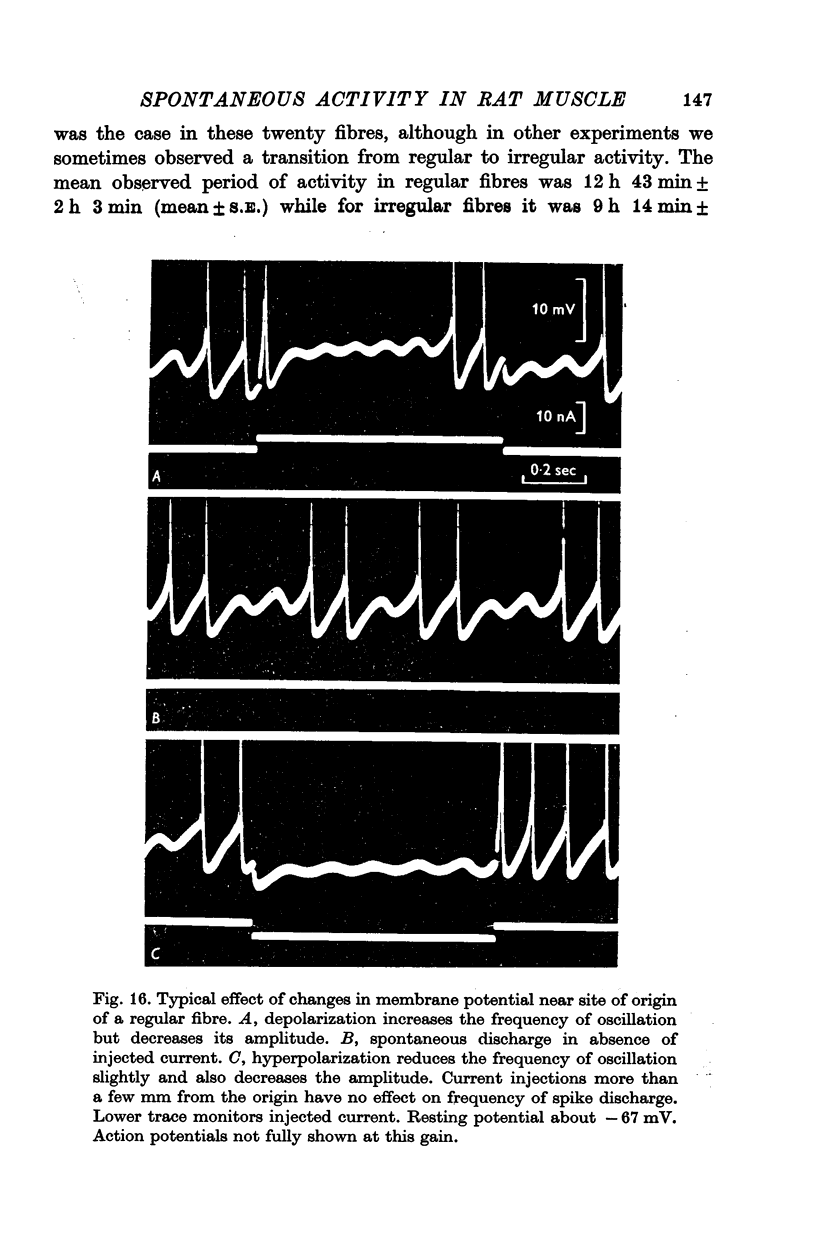
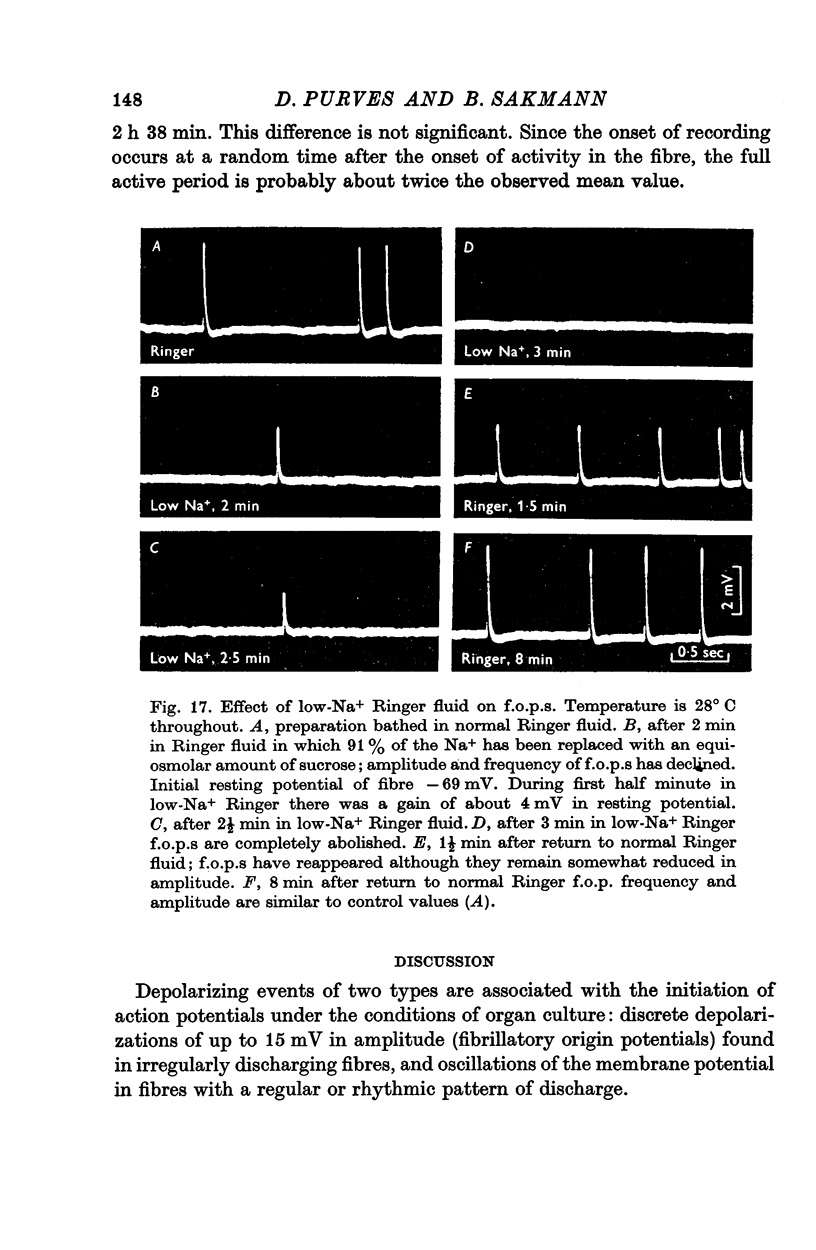
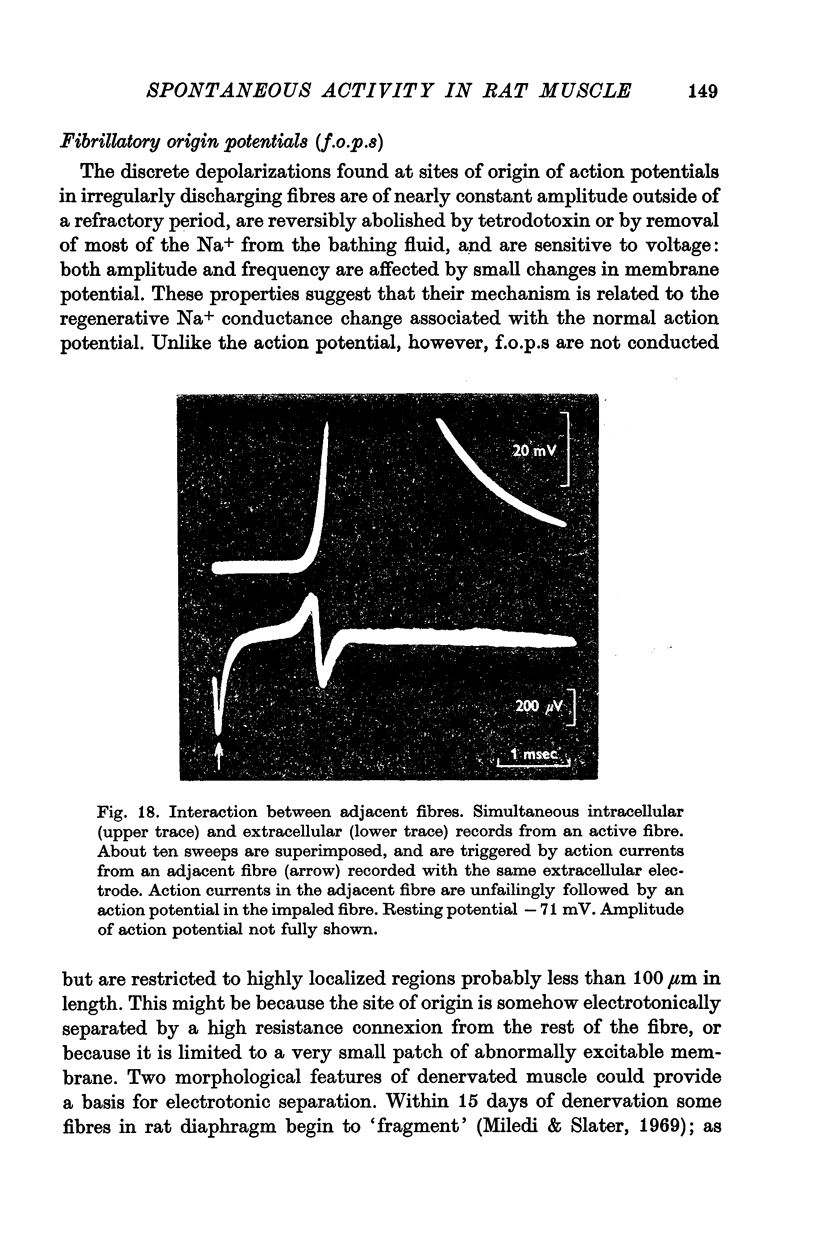
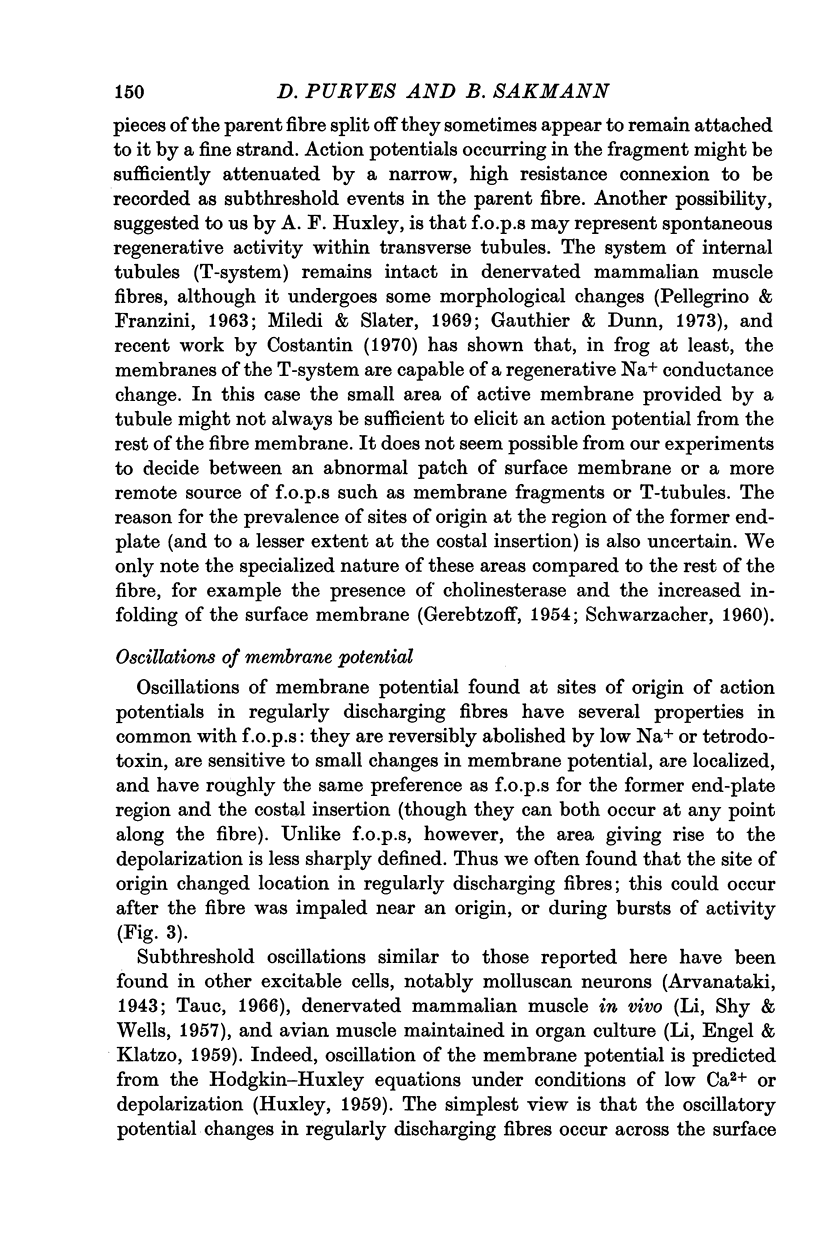
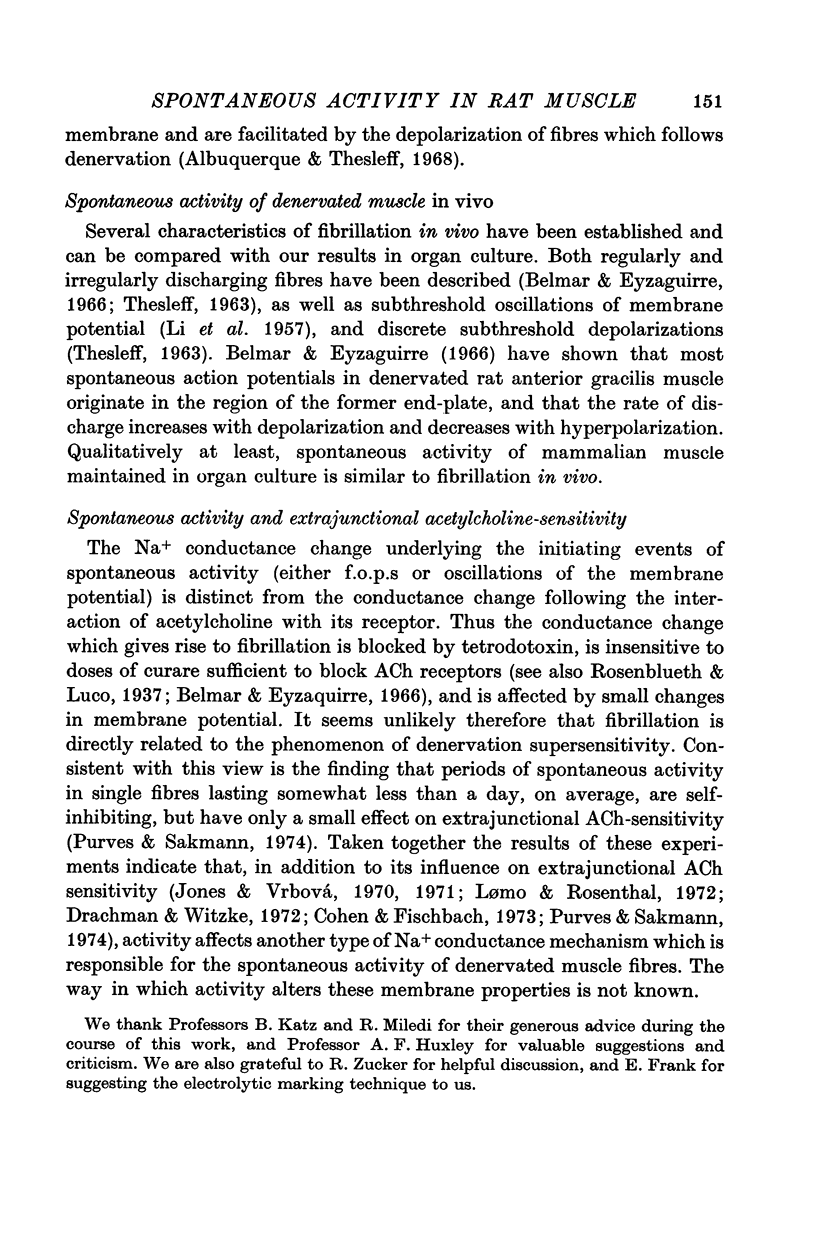
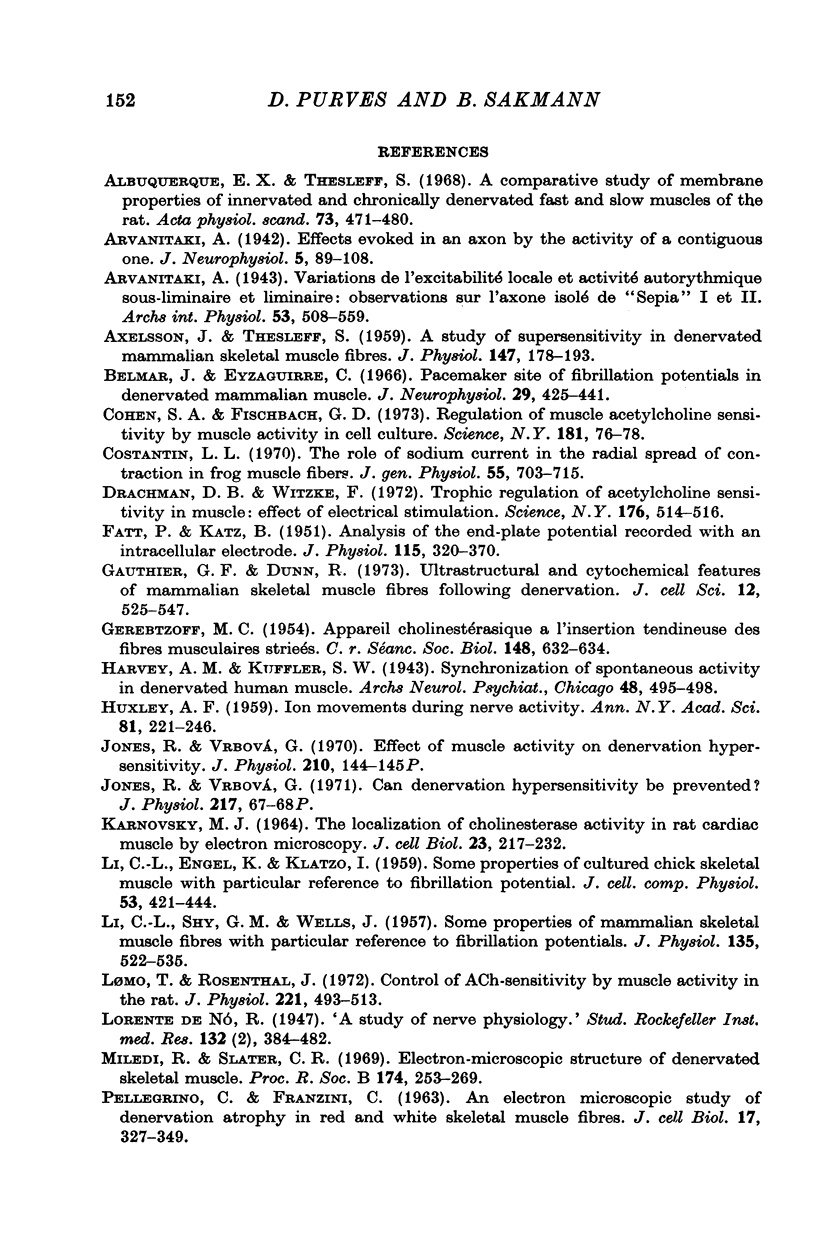
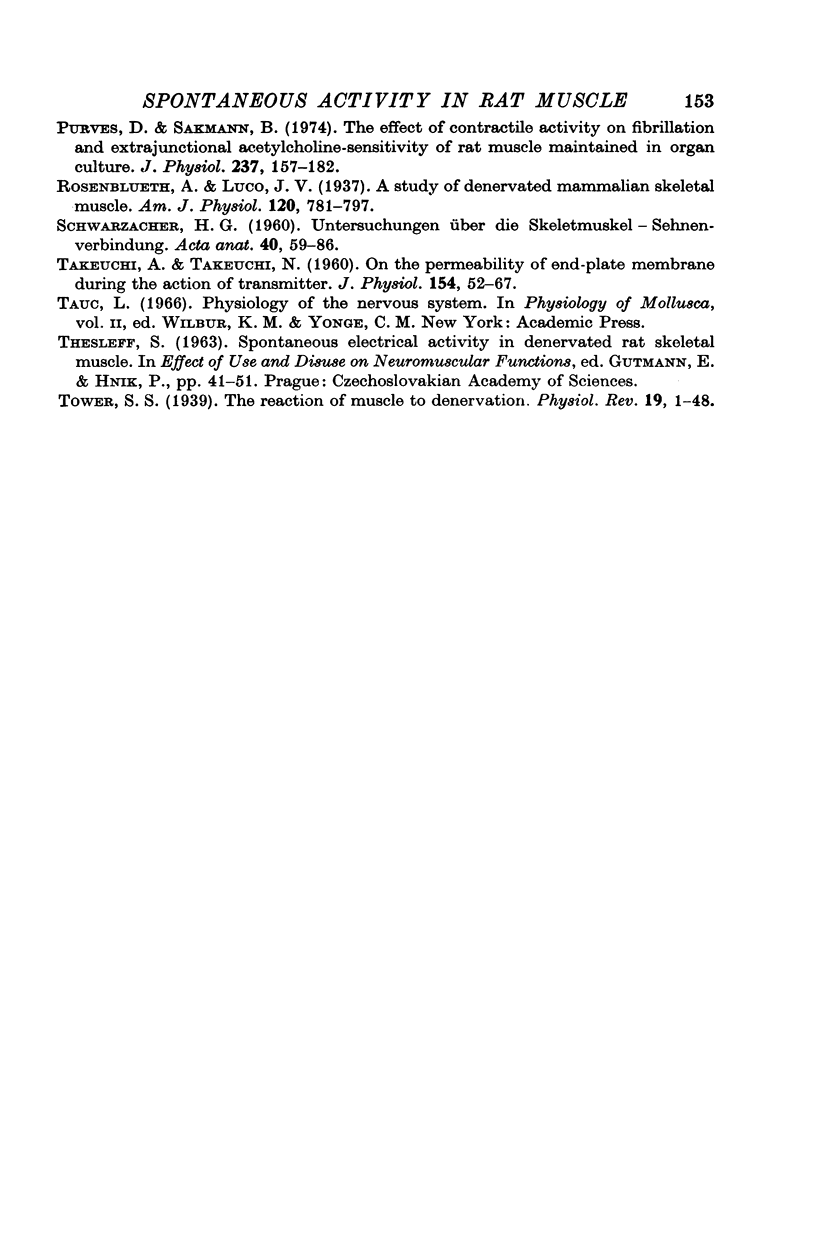
Selected References
These references are in PubMed. This may not be the complete list of references from this article.
- AXELSSON J., THESLEFF S. A study of supersensitivity in denervated mammalian skeletal muscle. J Physiol. 1959 Jun 23;147(1):178–193. doi: 10.1113/jphysiol.1959.sp006233. [DOI] [PMC free article] [PubMed] [Google Scholar]
- Albuquerque E. X., Thesleff S. A comparative study of membrane properties of innervated and chronically denervated fast and slow skeletal muscles of the rat. Acta Physiol Scand. 1968 Aug;73(4):471–480. doi: 10.1111/j.1365-201x.1968.tb10886.x. [DOI] [PubMed] [Google Scholar]
- Belmar J., Eyzaguirre C. Pacemaker site of fibrillation potentials in denervated mammmalian muscle. J Neurophysiol. 1966 May;29(3):425–441. doi: 10.1152/jn.1966.29.3.425. [DOI] [PubMed] [Google Scholar]
- Cohen S. A., Fischbach G. D. Regulation of muscle acetylcholine sensitivity by muscle activity in cell culture. Science. 1973 Jul 6;181(4094):76–78. doi: 10.1126/science.181.4094.76. [DOI] [PubMed] [Google Scholar]
- Costantin L. L. The role of sodium current in the radial spread of contraction in frog muscle fibers. J Gen Physiol. 1970 Jun;55(6):703–715. doi: 10.1085/jgp.55.6.703. [DOI] [PMC free article] [PubMed] [Google Scholar]
- Drachman D. B., Witzke F. Trophic regulation of acetylcholine sensitivity of muscle: effect of electrical stimulation. Science. 1972 May 5;176(4034):514–516. doi: 10.1126/science.176.4034.514. [DOI] [PubMed] [Google Scholar]
- FATT P., KATZ B. An analysis of the end-plate potential recorded with an intracellular electrode. J Physiol. 1951 Nov 28;115(3):320–370. doi: 10.1113/jphysiol.1951.sp004675. [DOI] [PMC free article] [PubMed] [Google Scholar]
- GEREBTZOFF M. A. Appareil cholinestérasique à l'insertion tendineuse des fibres musculaires striées. C R Seances Soc Biol Fil. 1954 Mar;148(5-6):632–634. [PubMed] [Google Scholar]
- Gauthier G. F., Dunn R. A. Ultrastructural and cytochemical features of mammalian skeletal muscle fibres following denervation. J Cell Sci. 1973 Mar;12(2):525–547. doi: 10.1242/jcs.12.2.525. [DOI] [PubMed] [Google Scholar]
- KARNOVSKY M. J. THE LOCALIZATION OF CHOLINESTERASE ACTIVITY IN RAT CARDIAC MUSCLE BY ELECTRON MICROSCOPY. J Cell Biol. 1964 Nov;23:217–232. doi: 10.1083/jcb.23.2.217. [DOI] [PMC free article] [PubMed] [Google Scholar]
- LI C. L., ENGEL K., KLATZO I. Some properties of cultured chick skeletal muscle with particular reference to fibrillation potential. J Cell Comp Physiol. 1959 Jun;53:421–444. doi: 10.1002/jcp.1030530307. [DOI] [PubMed] [Google Scholar]
- LI C. L., SHY G. M., WELLS J. Some properties of mammalian skeletal muscle fibres with particular reference to fibrillation potentials. J Physiol. 1957 Mar 11;135(3):522–535. doi: 10.1113/jphysiol.1957.sp005727. [DOI] [PMC free article] [PubMed] [Google Scholar]
- Lomo T., Rosenthal J. Control of ACh sensitivity by muscle activity in the rat. J Physiol. 1972 Mar;221(2):493–513. doi: 10.1113/jphysiol.1972.sp009764. [DOI] [PMC free article] [PubMed] [Google Scholar]
- Miledi R., Slater C. R. Electron-microscopic structure of denervated skeletal muscle. Proc R Soc Lond B Biol Sci. 1969 Nov 18;174(1035):253–269. doi: 10.1098/rspb.1969.0091. [DOI] [PubMed] [Google Scholar]
- Purves D., Sakmann B. The effect of contractile activity on fibrillation and extrajunctional acetylcholine-sensitivity in rat muscle maintained in organ culture. J Physiol. 1974 Feb;237(1):157–182. doi: 10.1113/jphysiol.1974.sp010475. [DOI] [PMC free article] [PubMed] [Google Scholar]
- SCHWARZACHER H. G. [Investigations on the skeletal muscle-tendon junction. I. Electron microscopic and light microscopic studies on the fine structure of the muscle fibertendon junction]. Acta Anat (Basel) 1960;40:59–86. [PubMed] [Google Scholar]
- TAKEUCHI A., TAKEUCHI N. On the permeability of end-plate membrane during the action of transmitter. J Physiol. 1960 Nov;154:52–67. doi: 10.1113/jphysiol.1960.sp006564. [DOI] [PMC free article] [PubMed] [Google Scholar]


